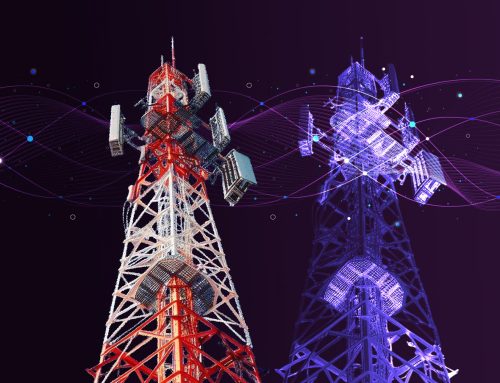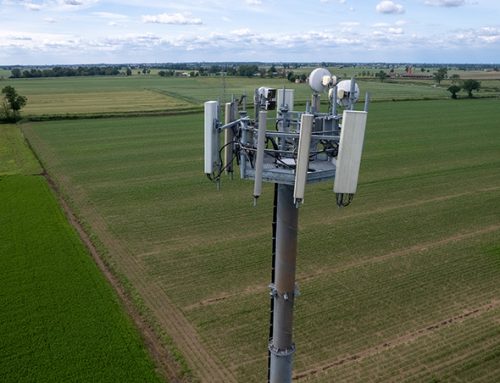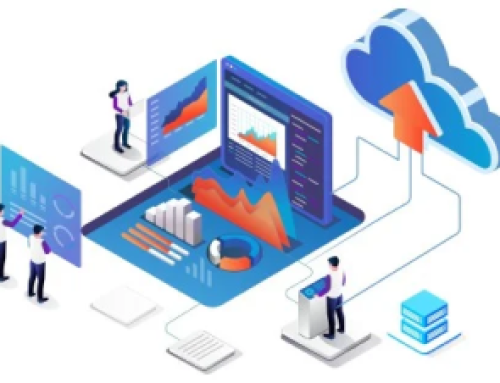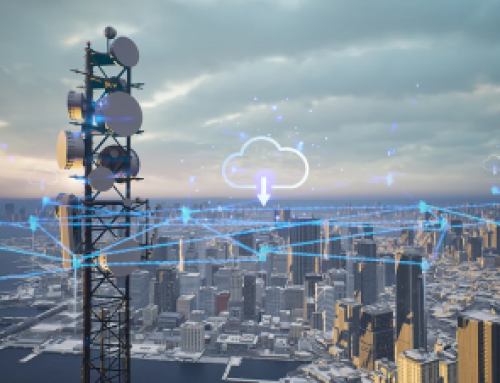In today’s rapidly evolving telecom landscape, securing remote sites and efficiently controlling access is paramount for TowerCos. Traditional key-based access methods, however, are proving cumbersome and outdated. With modern Site Access Management solutions, TowerCos gain full control over site access while enhancing operational efficiency and sustainability. No more physical keys mean reduced travel to obtain or return keys, lowering the ecological footprint and streamlining access for all stakeholders.
Beyond these immediate benefits, Site Access Management opens new dimensions of digital insights. Companies can leverage analytics and pattern-matching capabilities by digitizing access data—capturing who accessed the site, when, for how long, and under what conditions. This data enhances security and supports broader, intangible benefits like health, safety, and environment (HS&E) compliance, payment validation, and asset management. Additionally, it enables proactive workforce performance monitoring, real-time stop work, just-in-time access, and emergency capabilities, adding ample flexibility to site management.
In this blog we examine how TowerCos can achieve a new level of control, efficiency and safety through Site Access Management.
Understanding the TowerCo Landscape
TowerCos manage vast, distributed networks of base stations, many of which are in remote or challenging environments. According to TowerXchange, around 324 TowerCos own roughly 3.94 million towers [1]. Many of these sites are in remote locations or challenging environments and are vulnerable to a range of security risks, from intrusions by unauthorized personnel to the theft of equipment.
Such incidents not only carry direct repair and replacement costs but also risk network downtime and reputational damage. For TowerCos to balance growth with security, a resilient, scalable approach to site access management has become essential.
With companies focused on supporting the next wave of connectivity—from 5G to IoT—physical security at base stations is foundational to achieving uninterrupted service. However, the traditional approach to security, often reliant on physical locks, keys, and access cards, is no longer sufficient in today’s dynamic environment.
Using a digital Site Access Management system with audit trail capabilities provides significant advantages over traditional mechanical keys. By digitizing access records, companies are better equipped to:
Deter Unauthorized Activities: The knowledge that all site access is digitally recorded can discourage unauthorized attempts (e.g., visiting a site without valid permission), as there’s an audit trail that tracks who accessed the site and when.
Support Investigations: When a security incident occurs, the digital audit trail provides detailed records that can be shared with authorities, aiding in any investigations. Traditional keys, by contrast, offer no way to track who accessed the site, which limits investigative options.
The Shortcomings of Traditional Security Approaches
Conventional access management tools—such as physical keys, swipe cards, and onsite security staff—fall short of meeting the security and operational demands of modern telecom infrastructure. Each approach, while once effective, now poses limitations that impact both security and cost-effectiveness:
- Locks and Keys: Physical keys are challenging to track, particularly across a distributed network. Lost or misplaced keys result in costly replacements and can lead to security vulnerabilities if not promptly addressed.
- Access Cards and Swipe Systems: While more advanced than physical keys, access cards are still prone to theft, loss, or cloning, increasing the risk of unauthorized access. Additionally, the logistics of issuing and deactivating cards add operational complexity.
- Onsite Security Personnel: Staffing each site with security personnel can be a prohibitive cost, and for remote locations, it is often impractical. As networks expand, relying on physical presence alone for security is unsustainable.
In a recent deployment of the Smart Access Management solution for a leading Australian telecom operator, we discovered nearly 40 percent of site attendance occurred without a valid permit to work, clearly violating HS&E rules.
The Business Case for Smart Access Management
Smart Access Management addresses these challenges by leveraging advanced technology to streamline and fortify site security. By integrating digital locks, centralized access management, and mobile-enabled control, smart access solutions empower telecom operators to control site access with unprecedented precision and flexibility. Here’s how these solutions unlock value across critical areas:
|
Tangible Benefits |
Intangible Benefits |
|
Cost Reduction Digitized access management eliminates the inefficiencies and expenses associated with manual keying, issuance, and tracking, resulting in substantial reductions in operating expenditures.
Enhanced Security Digital access controls and audit trails provide robust security through secure, compliant transactions aligned with critical infrastructure standards. Definitive status reporting (open/close tracking) adds an extra layer of control.
Operational Efficiency Streamlined access processes improve asset visibility and enable effective management of critical infrastructure assets. This enhancement drives greater operational efficiency and productivity.
Network Effects Digital access solutions are generating positive network effects, creating value for all TowerCo operators. These solutions complement a comprehensive site security strategy, which is essential amid growing malicious activity targeting TowerCo assets.
Data-Driven Oversight Smart access management systems generate detailed access logs, enabling operators to monitor access patterns, enhance compliance, and improve audit readiness. This data-driven approach strengthens accountability and supports regulatory adherence, particularly valuable in highly regulated telecom environments.
|
Health and Safety Digitized site access helps protect TowerCo sites from unauthorized entry, reducing the risk of incidents that could impact public safety or personnel. (e.g., Restrict access to uncertified climbing systems to ensure the safety of employees and prevent injuries or accidents.)
Payment Validations and Incident Management With detailed access data on time and attendance, managers can verify scheduling adherence and incident records, providing a clear and reliable basis for payment validations and correlation of incidents.
Lock Location Tracking Accurate tracking of lock assets supports mobile management and long-term facilities planning. This enhances asset capitalization, maintenance, and warranty management, providing clear insights into asset locations. These insights can be highlighted to the respective TowerCo portfolio’s management platforms for customer co-locations and compounds.
User and Contractor Performance Big data insights into user behaviour, site outages, and high-cost sites can identify poor practices or performance issues. Enhanced governance and reporting allow managers to track access patterns, flag unauthorized activity, and monitor compliance with access protocols.
Real-Time Stop Work Digital controls allow operators to instantly halt access in response to individual, workforce, or emergency situations, safeguarding sites with a single command.
Lock-Out Mechanism This feature prevents unauthorized access by locking out users without permission and stopping key-sharing, enhancing site security against malicious actors.
Just-in-Time, Offline, and Emergency Access For immediate and flexible access needs, digital solutions offer controlled entry for routine, offline, or emergency scenarios, making remote and rural site management more responsive when it matters most. |

Figure 1 – Smart Access Management for Tower and Infrastructure Companies
By combining security with operational efficiency, smart access management offers a strategic advantage in the pursuit of resilient and scalable network infrastructure.
Practical Applications of Smart Access Management for TowerCos
The application of Smart Access Management technologies is reshaping physical security across telecom infrastructure. Leading telecom operators are already leveraging these systems to drive both security and operational improvements:
Remote Access Control
Technicians and contractors frequently need immediate access to remote base stations, often in urgent situations. Smart access management enables timely, secure access without the logistical delays of physical keys or swipe cards, supporting critical maintenance and emergency response activities. Other stakeholders, including co-located customers, property owners and utilities can be provided access easily – game changer
Compliance and Auditability
Telecom operators face stringent regulatory standards for infrastructure security. Smart access systems offer comprehensive audit trails, tracking every access event with granular detail. This level of transparency simplifies regulatory reporting, while enhancing accountability across the network.
System Integration
For an industry that demands streamlined operations, smart access management systems can integrate seamlessly with existing network monitoring and management systems. This integration allows operators to unify site security with other operational data, yielding a holistic view of network operations.
Integrating the Site Access Management solution with a TowerCo’s portfolio management platform enables precise control over access and permits. Access can be scheduled for specific times of day to ensure that only authorized personnel can enter when necessary. This solution automates access permissions through seamless API integration, enhancing security and operational efficiency by synchronizing access control directly within the existing TowerCo platform.
TowerCo Digitization: Moving Towards Smarter, Scalable Solutions
As telecom operators scale to meet the demands of an increasingly connected world, physical infrastructure security must adapt accordingly. Smart Access Management solutions offer telecom operators a pathway to futureproof site security with a flexible, data-rich, and scalable approach. These solutions empower telecom leaders to minimize risks, optimize operational costs, and align their security practices with the broader digital transformation of the industry.
Looking ahead, the convergence of IoT, AI, and cloud-based systems will continue to shape how telecom operators manage infrastructure security. Smart access systems are well-positioned to meet this evolving demand, bringing not only enhanced security but also enabling new efficiencies and insights that support telecom’s role as a foundational enabler of digital connectivity.
Conclusion
For TowerCos and InfraCos, securing their sites is more than a defensive measure—it’s a strategic imperative for network reliability and growth. Smart access management provides an opportunity to enhance physical security, optimize costs, and achieve the level of oversight and agility that modern telecom infrastructure demands.
In adopting Smart Access Management, operators are not only safeguarding their assets but also building a security framework that aligns with the future of telecom—a future defined by resilience, efficiency, and seamless connectivity.
Are you ready to rethink your TowerCo digitization strategy? Consider assessing your current systems and exploring how Smart Access Management could fortify your network against physical threats while improving operational efficiency.
[1] – TowerXchange – TowerCo League Table

























![Telco Cloud: A Key Enabler to Telco Transformation [Part 1]](https://www.tatacommunications-ts.com/wp-content/uploads/2023/06/Telco-Cloud-blog_image-1-500x383.png)




